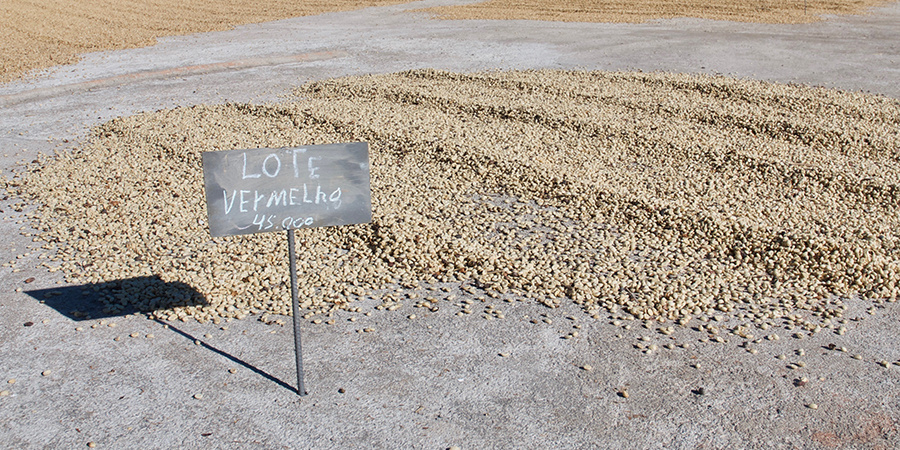
origin: brazil
posted: april 2017
IN SHORT
brazil is by far the biggest coffee producing country in the world. it is therefore not surprising that coffee is mainly grown on large scale, industrialized farms. within this commodity reality, producers like our partner bruno nevertheless choose to focus on specialty coffee production and try to make name for brazil as a specialty coffee producer.
coffee is harvested from july to september and typically done by machines because of the relative flat lands and high wages in brazil. the harvest season is dry and therefore coffee is mainly dried on patios and processed as a natural or pulped natural. after processing, quality sorting and grading is practically only done mechanically as wages in brazil are high.
INTRODUCTION
the first thing you need to know is that brazilian coffee production is mainly about quantity. the country is by far the biggest producer of coffee in the world producing 2.6 billion kg of coffee in 2015 followed by vietnam (1.7 billion kg) and colombia (0.8 billion kg).¹ this means the focus of brazilian coffee production is high volume.
brazil is famous for its 'classical' cup profile with cupping notes like chocolate, nuts and vanilla combined with a firm body and low acidity. in general this makes a brazil a more accessible coffee to drink. this doesn't mean that brazil can't produce more exotic coffees, for the larger part we simply do not know brazil's specialty potential. of course, the aromas are partly restricted by brazil's terroir - e.g. the lower altitude - but on the other hand there hasn't been much interest in quality amongst brazilian producers. this is changing for some decades because farmers like our partner bruno are really making an effort to make brazilian coffee famous for more than just the enormous amounts of commodity coffee.
BRUNO
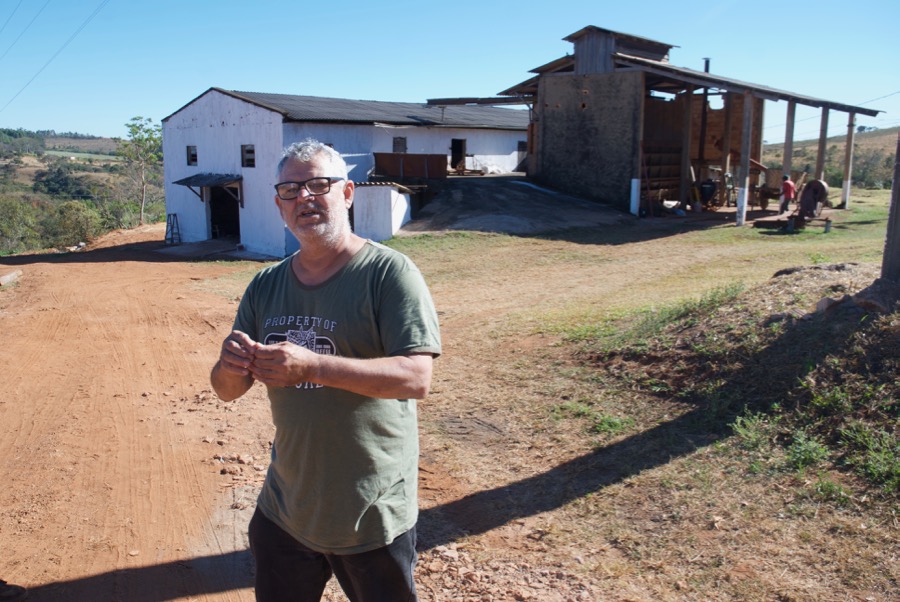
growing up on his family farm bruno already selected coffee by the cup together with his father. after college he returned to the little town of campos and altos and took over the management of the farm. he decided to increase the production of specialty coffee because he believed in producing quality over commodity. and with success: his farm's specialty coffee percentage of the harvest has been increasing (it went up from 35% to 60%) and his coffees can sometimes be so surprising in its acidity and fruitiness that it reminds us of a washed coffee from central america or a funky but balanced african natural.
in 2011 bruno visited amsterdam for the first time. “I loved the place and the people” he says “I felt like I was connected somehow and also felt the sensation that specialty coffee was about to blow up on the country”. afterwards bruno started focusing on exporting to the netherlands. in 2015 we bought bruno's coffee for the first time and stuck with him since. he delivers great quality and is a charming, straight up man. after meeting bruno many times in amsterdam, it was about time to visit him at his farm. and so it happened, together with three other dutch roaster clients of his we flew out to belo horizonte. for a week we were taken under the wings of bruno and his family and here we will share our impressions and what we’ve learned with you.
COFFEE FARMING IN BRAZIL
we will illustrate coffee farming in brazil by showing bruno’s farm. some things therefore are specific to his way of working, but it paints a good picture of the way specialty coffee is farmed in brazil.
growing cherries
bruno's fazenda esperança is located in minas gerais: the main coffee producing province of brazil. harvesting time is during brazilian winter (july till september) when there is little to no rainfall. this drought in harvest time enables farmers in some parts of minas gerais to partly dry their cherries on the coffee plant itself without causing them to rot (as can be seen on the third picture below). where in most parts of the world cherries are best picked when ripe, here we found a lot of cherries drying on the trees. more on the aroma effects later on.
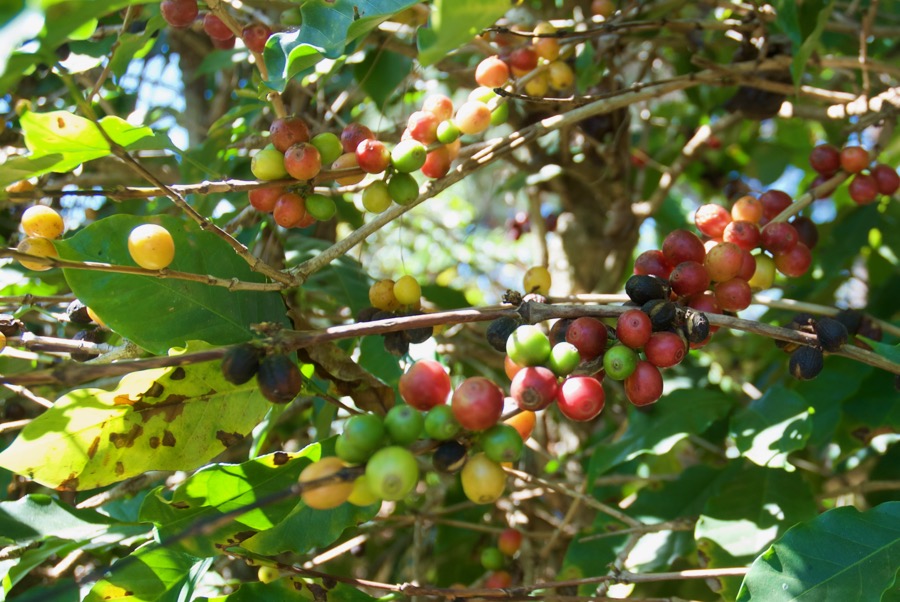
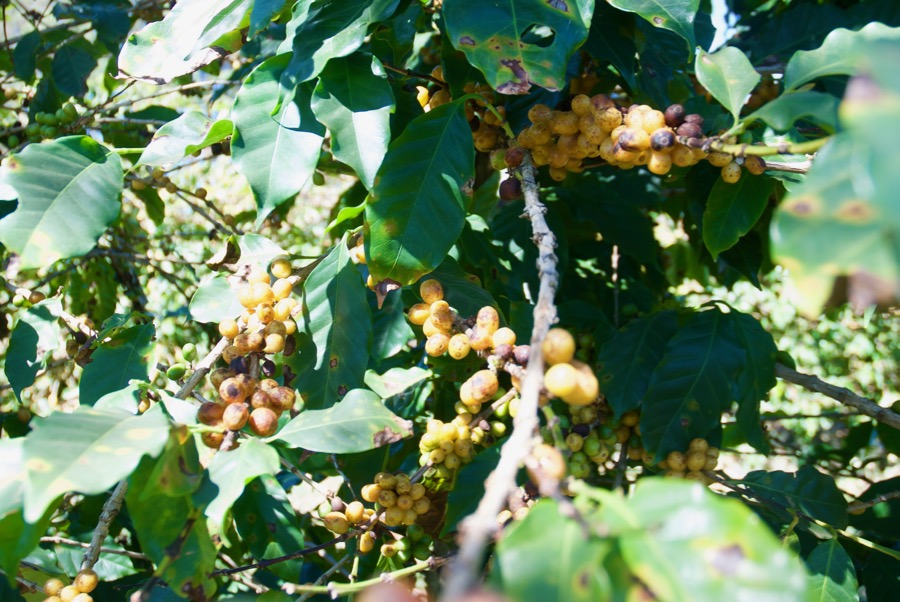
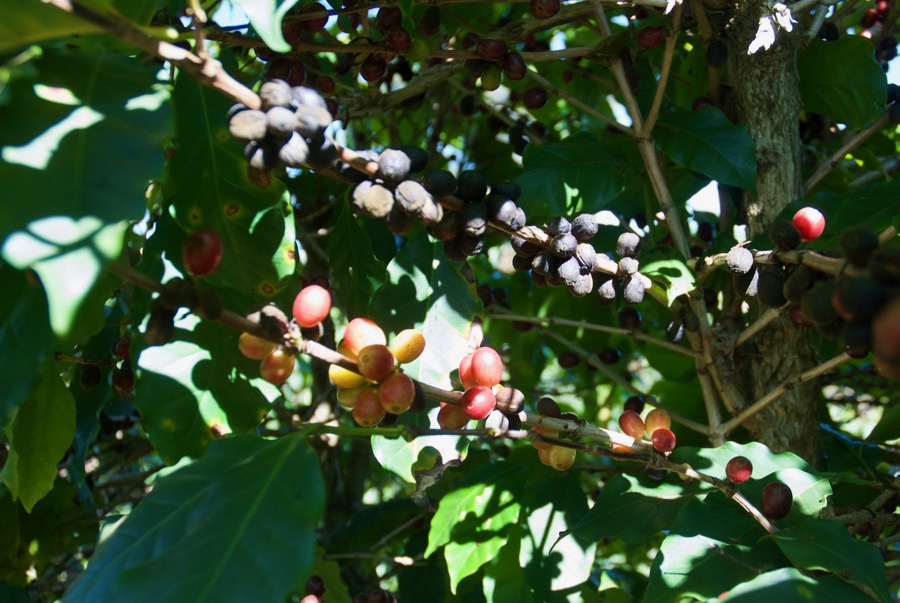
harvesting cherries
another distinctive element of brazilian coffee production is that the altitude of the farming lands is relatively low for arabica coffee (roughly between 900-1300 masl) and the farms are relatively flat. this allows for the use of harvesting machines. this may also be one of the contributing factors for brazil developing as a commodity coffee producer as harvesting can be made very efficient this way. manual picking would result in about 40% increase in the cost price of bruno’s coffee (also because wages in brazil are relatively high compared to other coffee producing countries). the harvesting machine operates by shaking the plants with carwash like arms. a bit scared by the picture of a rough machine handling the delicate plants, we were surprised about how well the plants were treated by the machine.
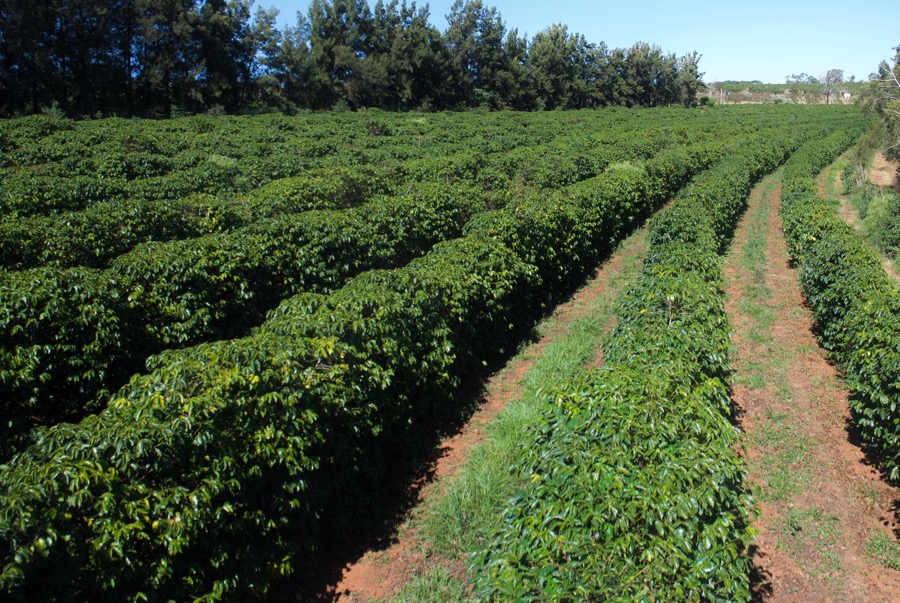
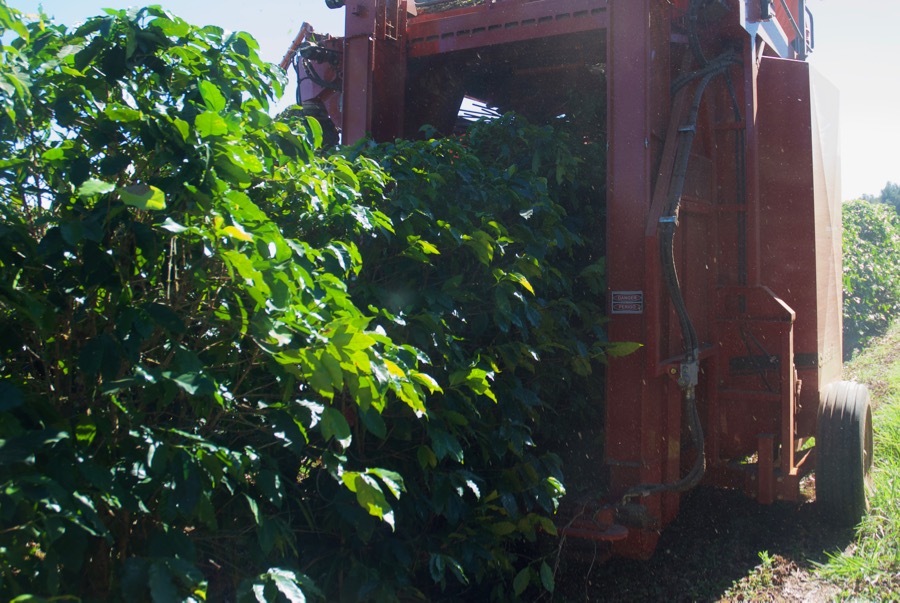
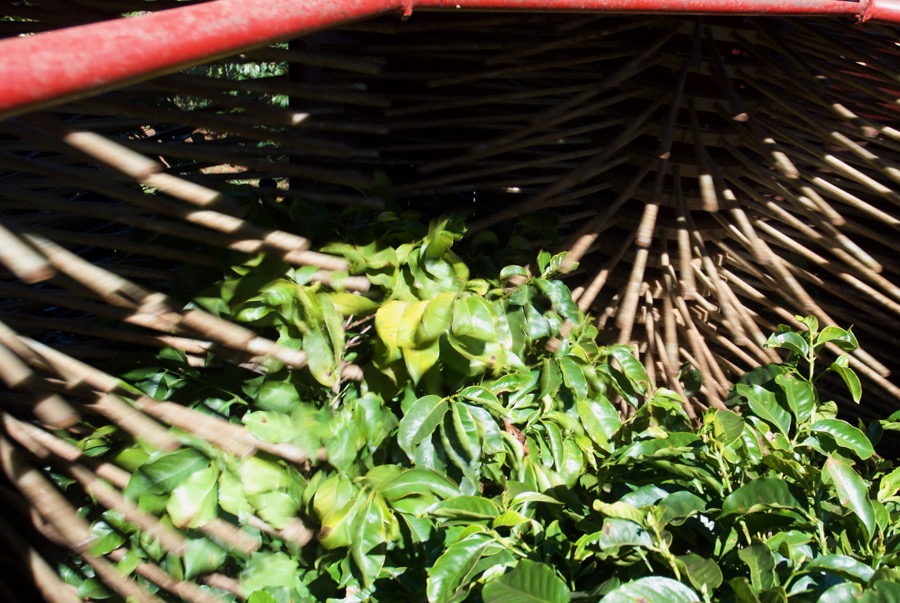
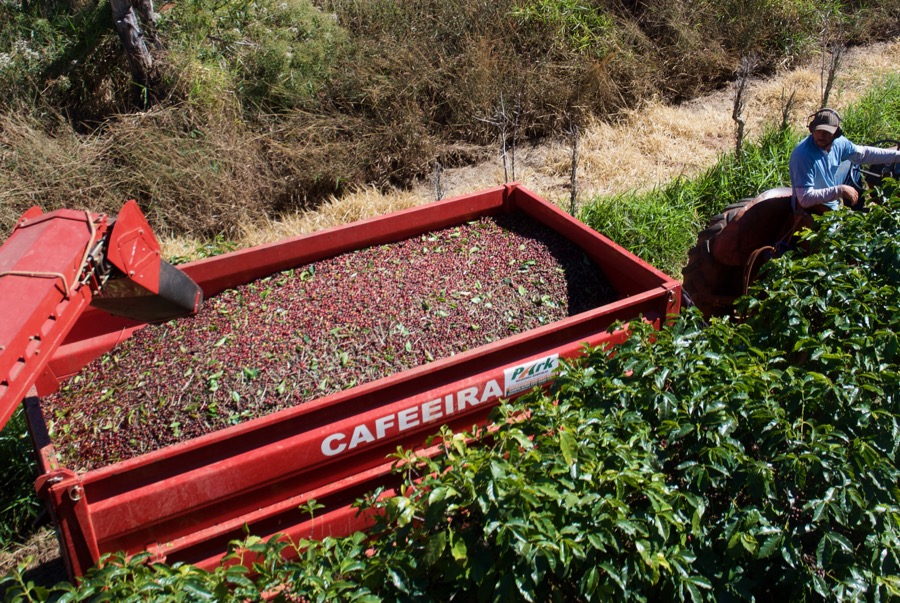
processing the cherries
after the machines did the picking, the yield of the harvesting machine is released into a receiving tank. as you can see, the presence of leaves and branches amongst the coffee cherries is quite low considered how many plants are passed by the machine to reach this amount of cherries. using water the coffee leaves the receiving tank and filters out the biggest leaves, branches and other large objects.
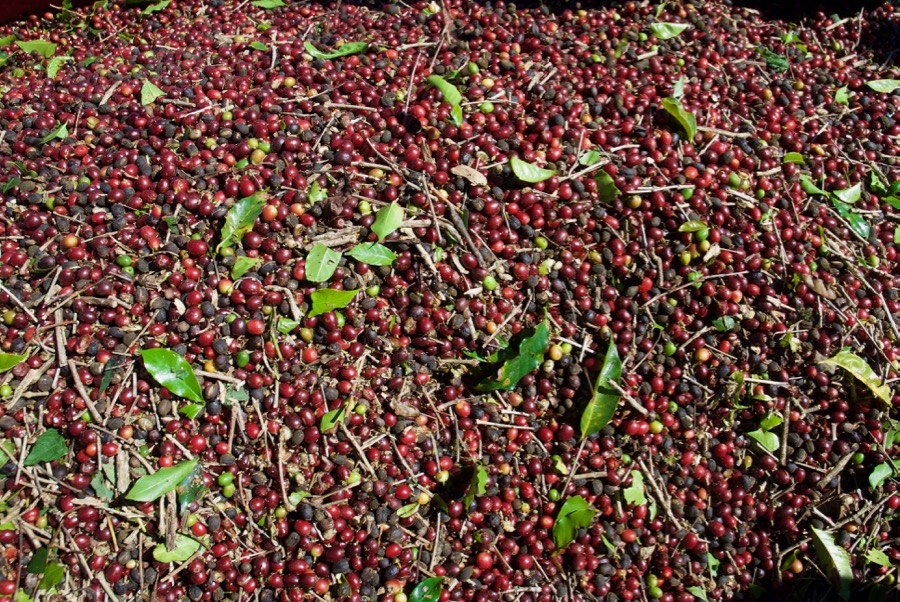
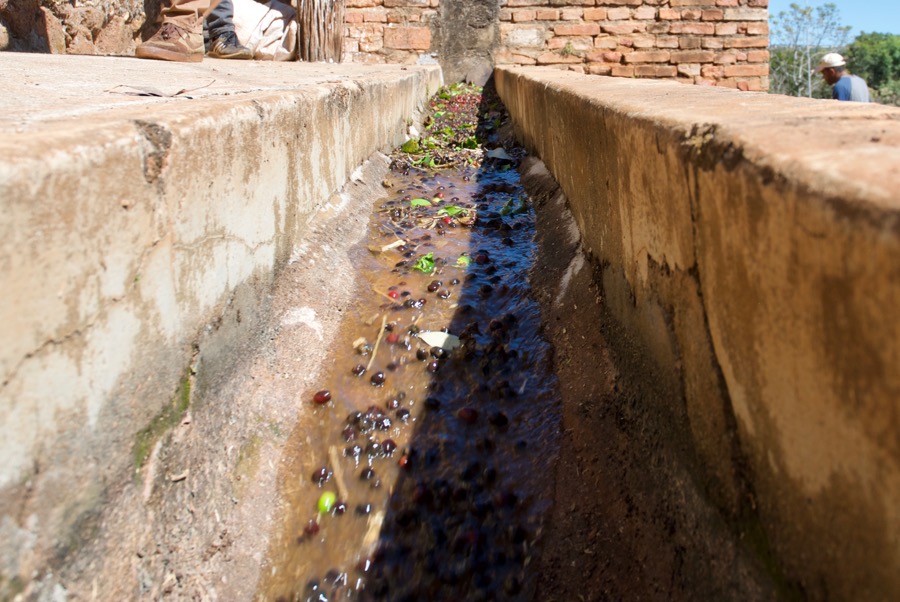
first sorting
afterwards the coffee will reach a new tank, where the cherries that already partly dried on the tree will float on the water because of their lower density. this enables bruno to separate the ‘floaters’ from their ripe and underripe peers, which stay at the bottom of the tank.
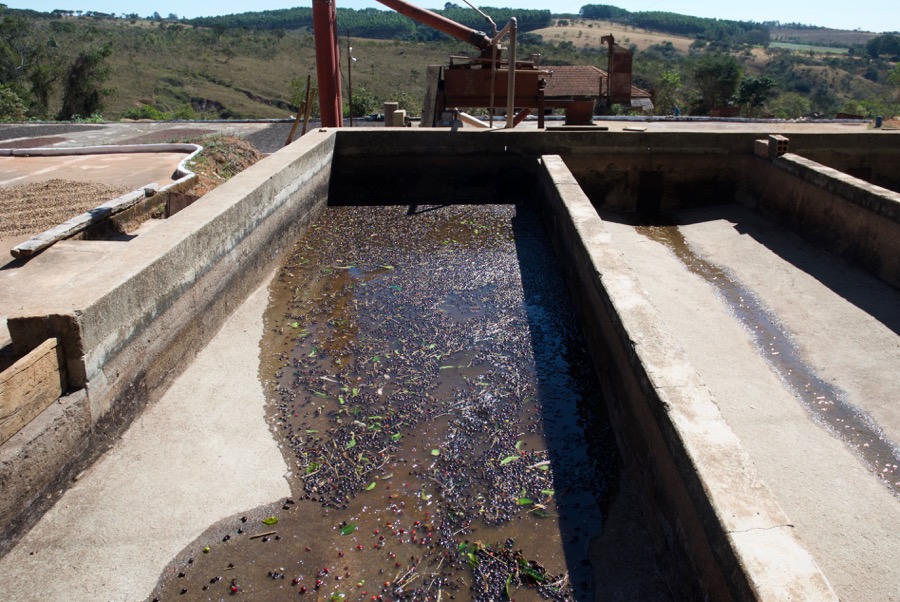
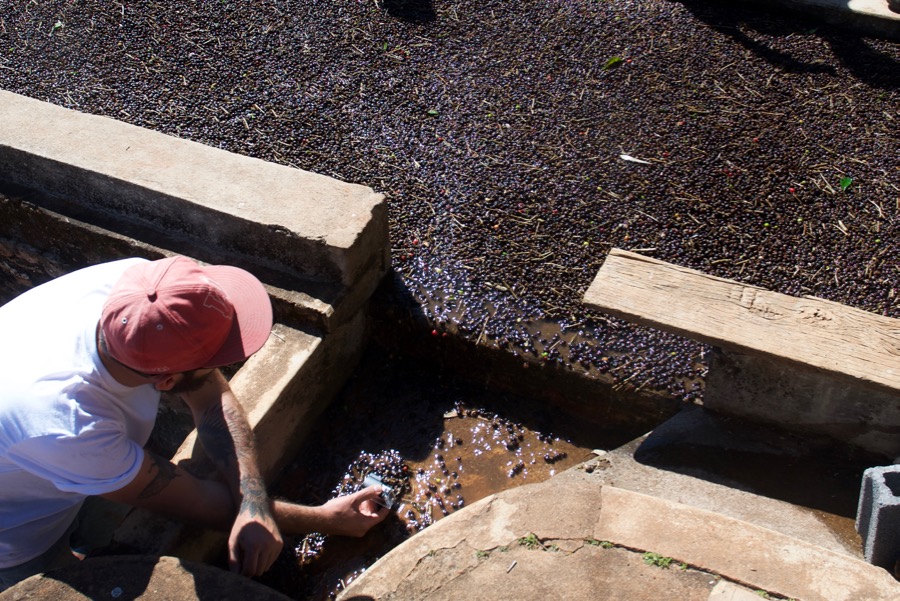
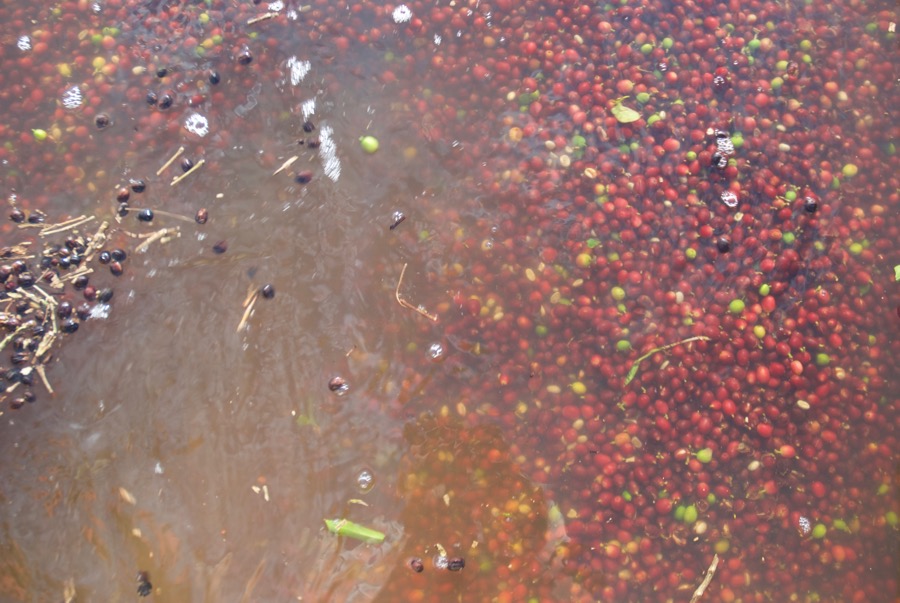
natural processing
the separated floaters are then directly transferred to the patio for drying. normally floaters would be considered defects, as drying on the plant in more humid conditions than at bruno’s farm, causes the cherry to rot / ferment and results in off aromas.
directly drying the coffee beans while they are still inside their cherry is referred to as the ‘natural’ process. the difference in color of these drying cherries is due to the different variety colors that coffee can have: the dried cherry color of the yellow cherry varieties are a bit lighter than the red varieties.
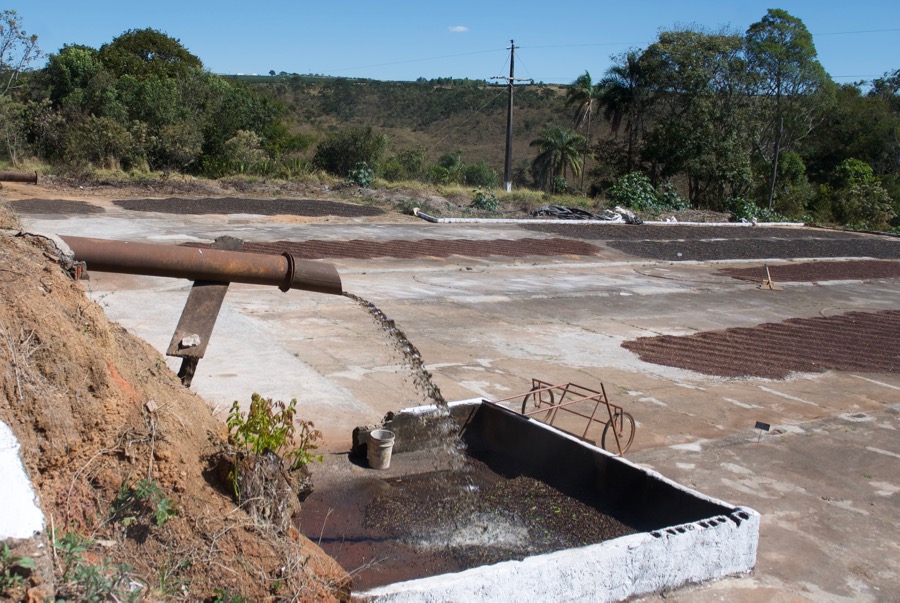
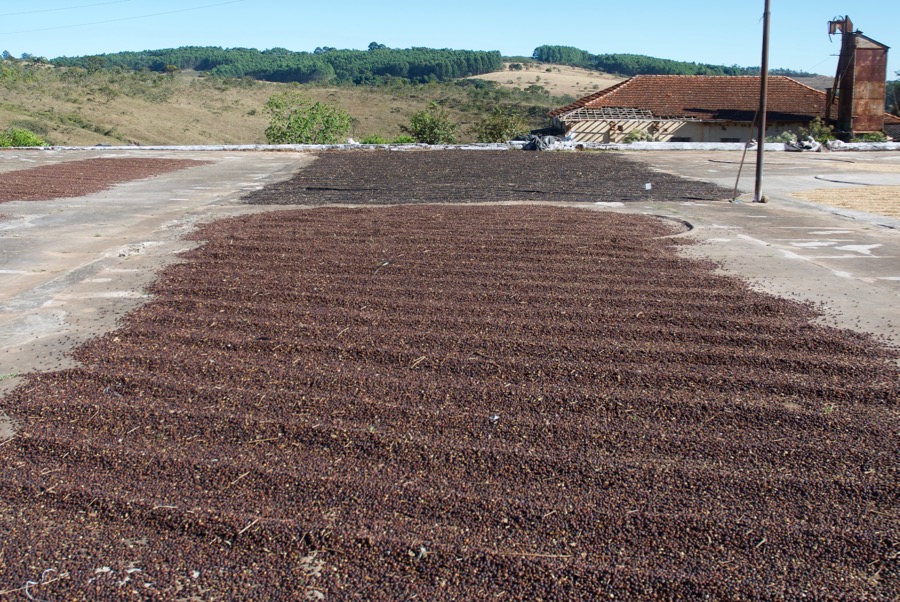
pulped natural processing
the non-floating cherries are then run through a depulper that removes the skin and part of the mucilage from the coffee beans. the separated coffee beans are still coated by a substantial amount of mucilage. most of the depulped coffee is then transferred to the drying patio. this way of processing the coffee is mostly referred to as ‘pulped natural’ as the coffee is only pulped before being treated as a natural.
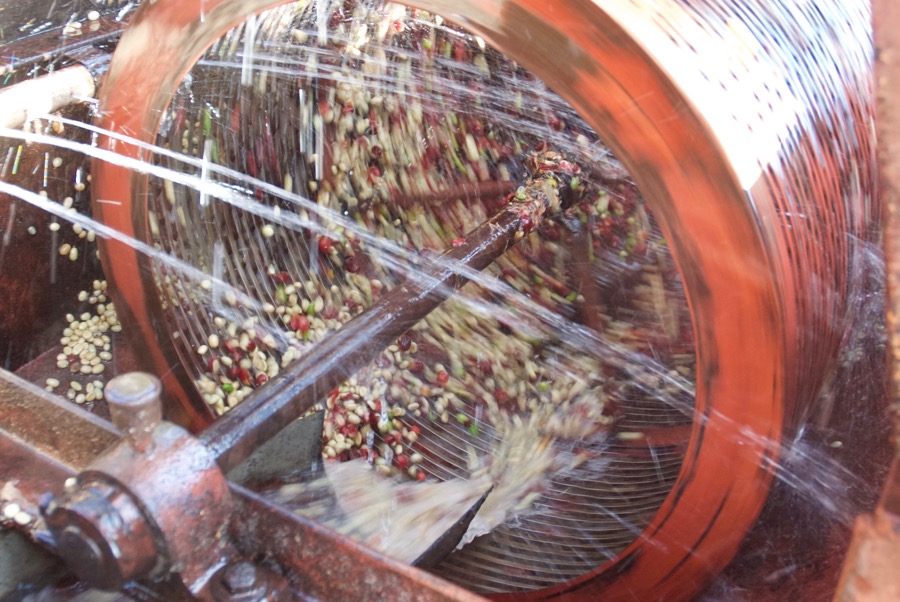
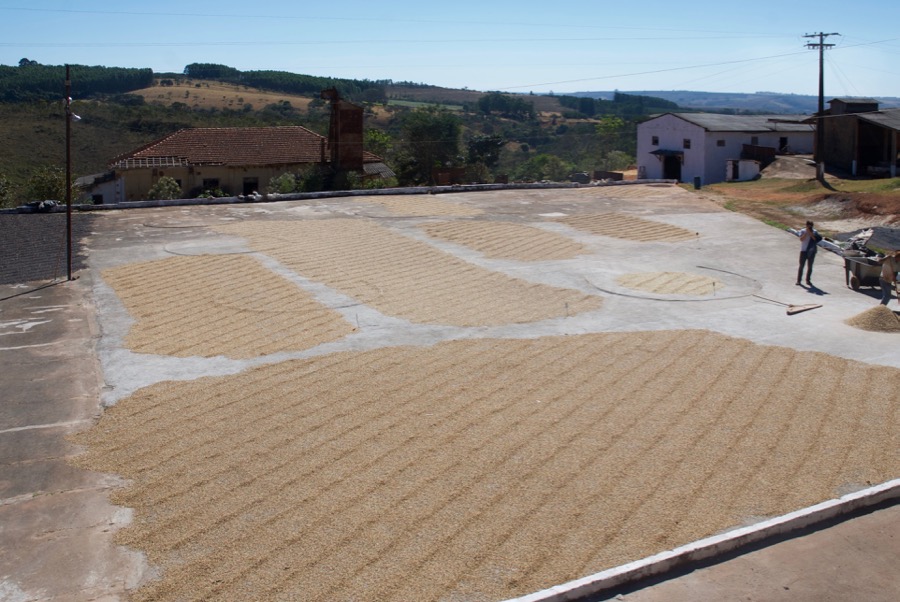
washed processing
another way of processing the coffee is fermenting the coffee in water after depulping. this way the mucilage of the coffee cherry is fully removed - washed off - before drying the coffee on the patio. as mentioned before, this doesn’t happen a lot in brazil, but bruno processes some of his lots this way. generally this results in a more clean and slightly more acidic cup. read more about the washing process in our rwanda origin blog.
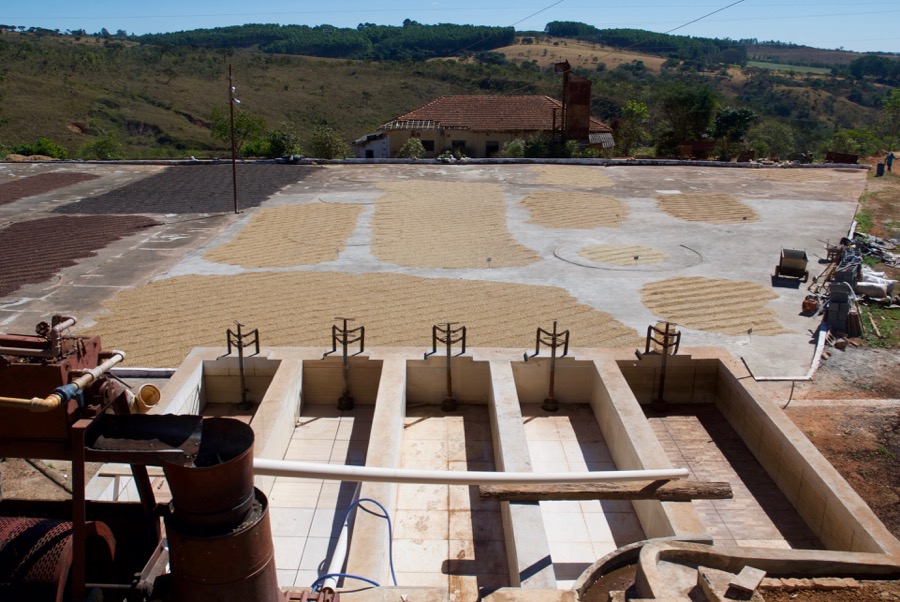
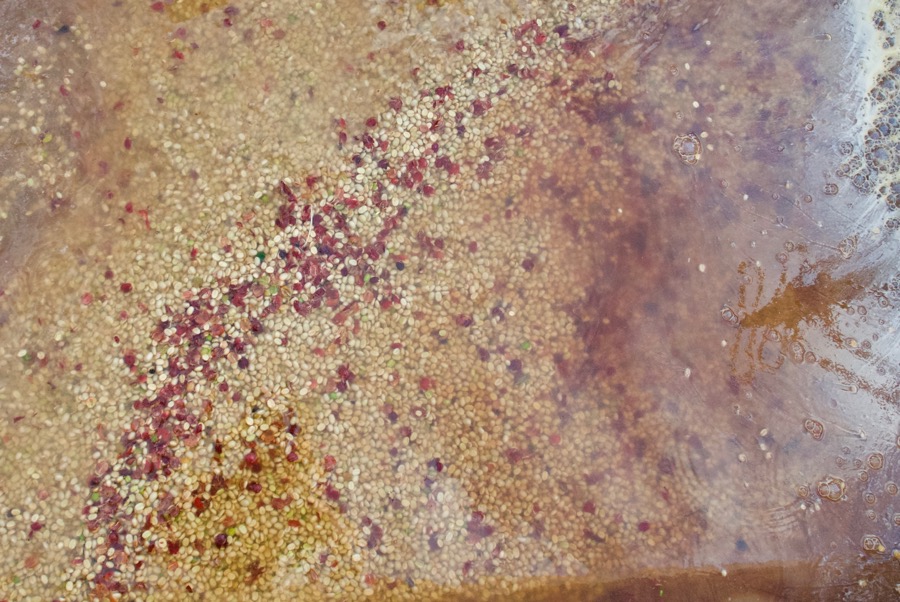
patio drying
drying coffee is a delicate process. you want to make sure the coffee isn’t drying too quickly (which can ruin the coffee’s aroma), but also not too slowly (to avoid that the coffee might rot). drying coffee on a patio is relatively quick (depending on the humidity 10-14 days) because the concrete retains some of the sun’s heat. to make sure the coffee is drying as even as possible on a patio it is important to keep on turning the coffee over. that’s why there are lines in the drying lots: bruno realign the drying coffee every hour in the direction of the sun using a kind of wooden broom (see the picture below).
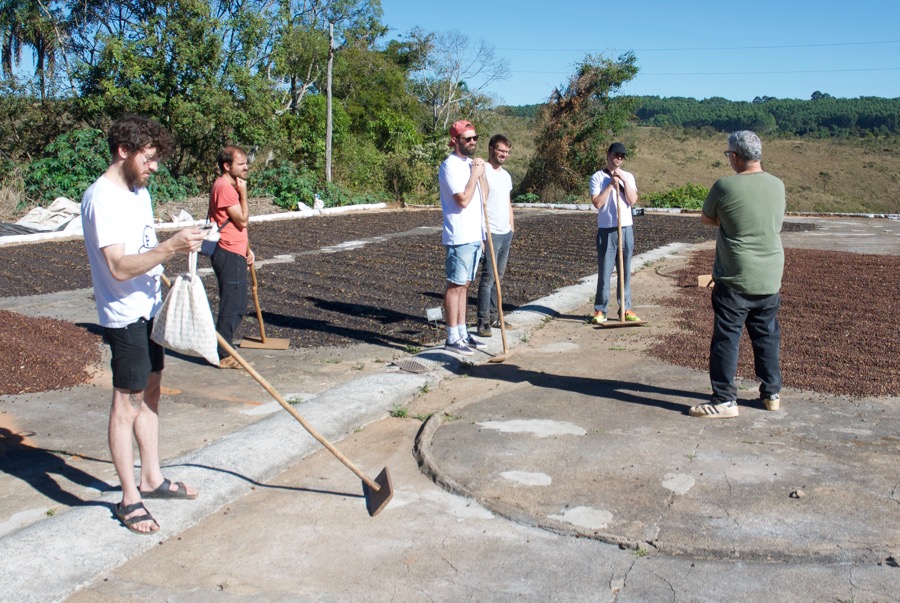
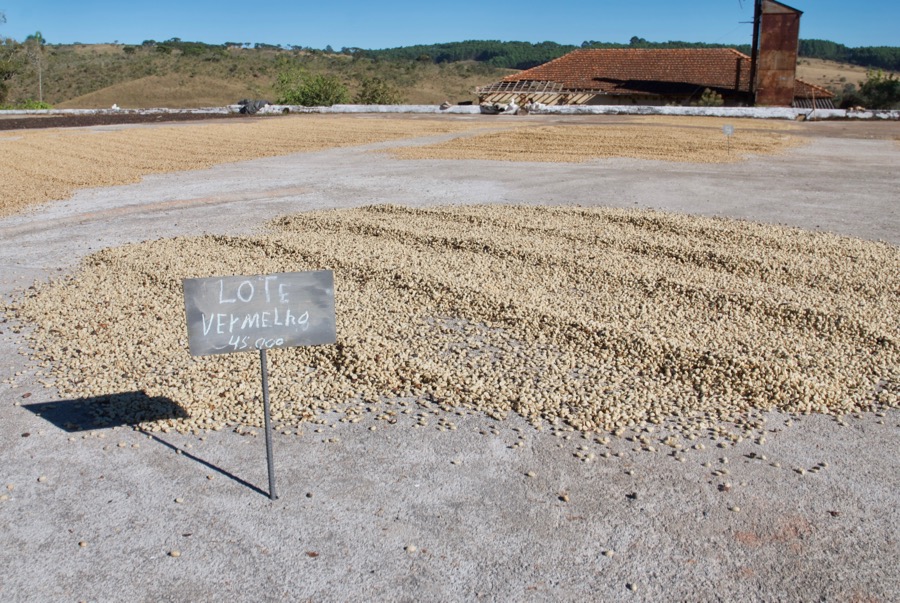
bruno's experiments
one of the cool things about bruno as a coffee farmer is his interest in trying new things in order to improve his coffee. on the photo below you see the partly finished african (drying) beds. this way of drying coffee is much more time consuming than patio drying, but potentially benefits the quality by a more even drying of the coffee (as air is able to pass underneath the drying coffee).
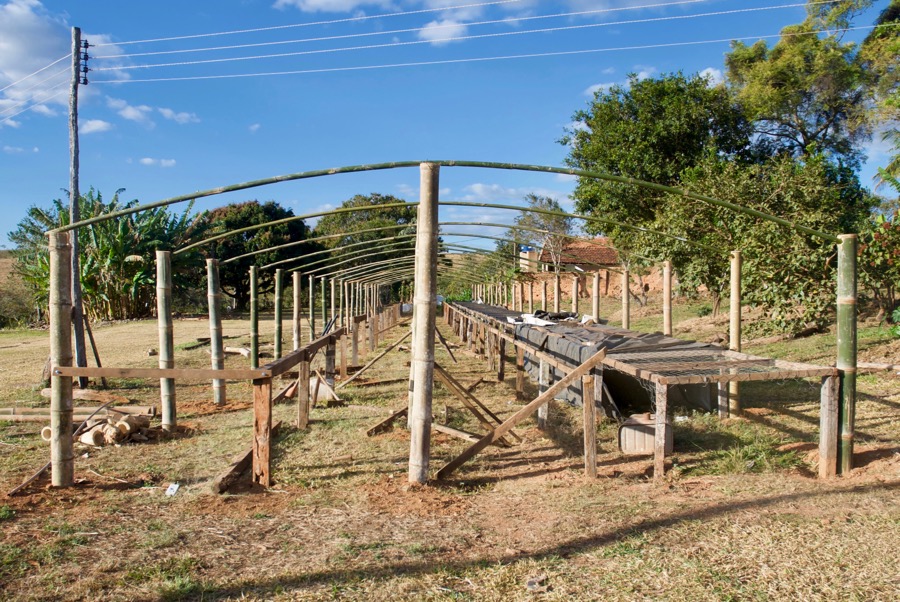
cupping the harvest in progress
cupping some of the harvest was great to do on the farm. once again, we were very impressed with the quality of bruno’s coffees, and one lot really stood out in the cupping for us. it turned out to be a ‘floater’ lot, so the cherries that dried on the tree and were afterwards processed as a natural. very surprising tropical fruits in the cup :)
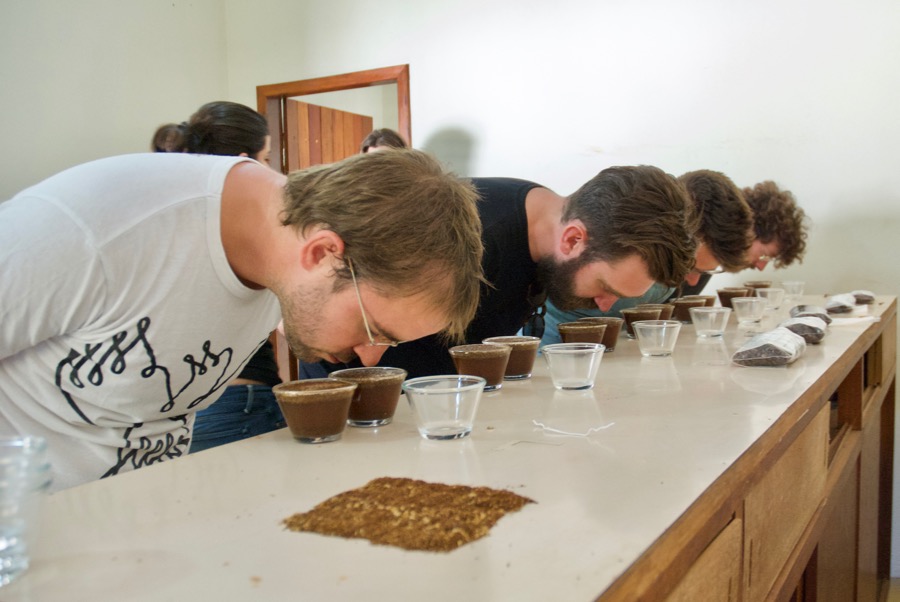
COMMODITY VS SPECIALTY
bruno’s academia do cafe exports the coffee of his own fazenda esperança, but he also connects other producers in brazil to the specialty coffee market in the netherlands by exporting their coffee. he took us to meet some of the people he works with. first off a much bigger farm (guima, around 1000 hectares) than his own (60 hectares), then to an even bigger one (fazenda paraiso, 2000 hectares) and last to the progressive small farmer association of canastra coffees.
guima (1000 hectare farm)
what’s noticeable on the photos below is the endlessness of coffee plants growing on a sandy, very empty soil. there is no grass, weeds or trees around. though the coffee trees are producing an enormous amount of cherries. it’s kind of like the plants are on steroids because they are in the full sun and therefore are able to produce a lot. but that's only possible if there are also a lot of nutrients available. so they need to be fed a lot extra to get them to produce to this extend.
here clearly showed the country that produces a large amount of the consumed coffee worldwide. and in a way this is still a pretty progressive coffee farm in brazil. they take very good care of their workers and try to increase their specialty production. last year about 1.5% of their total production was specialty coffee, this year they will probably double this. in this process bruno is connecting them to specialty coffee roasters like us, so they are able to get a better price for their coffee and the focus on producing specialty coffee will actually pay off and the sole focus on mass production is toned down a little.
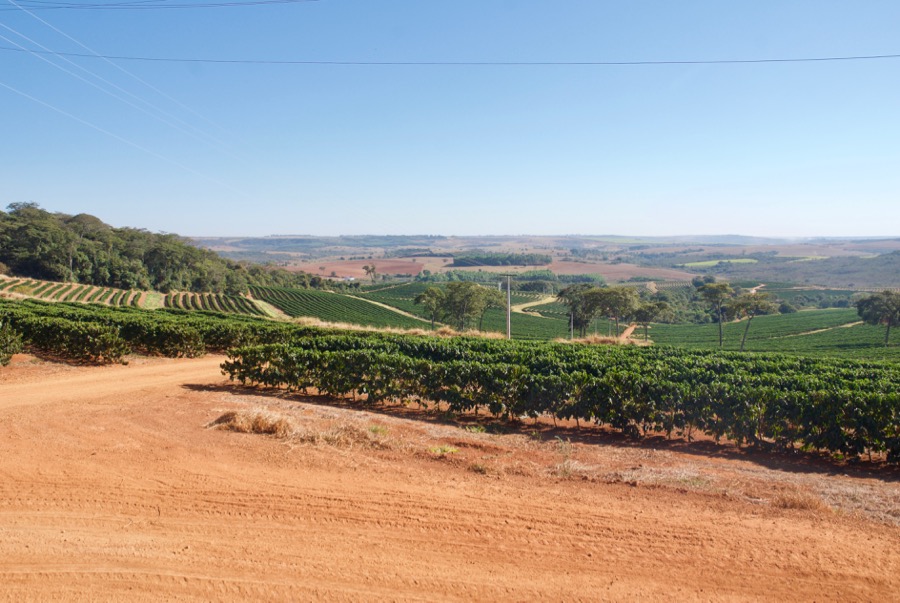
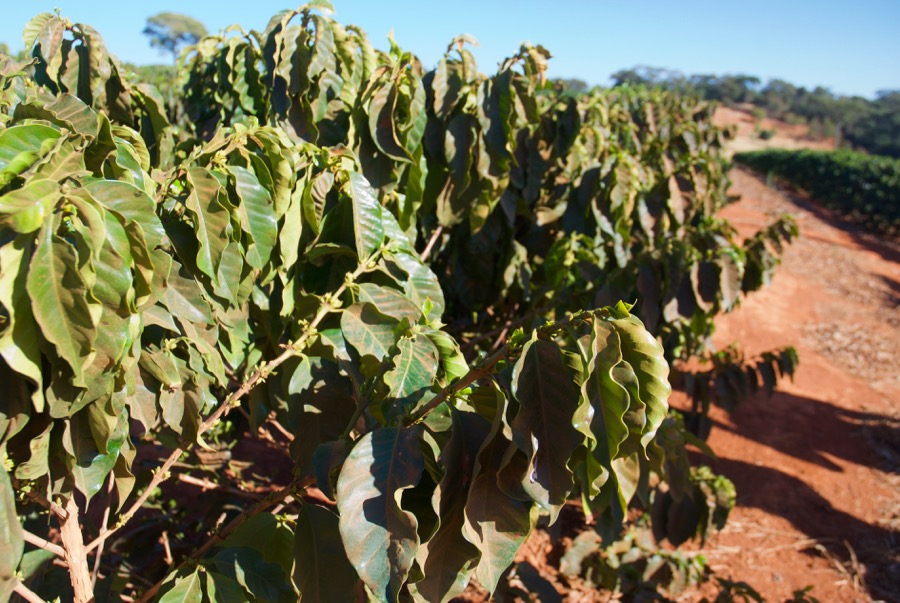
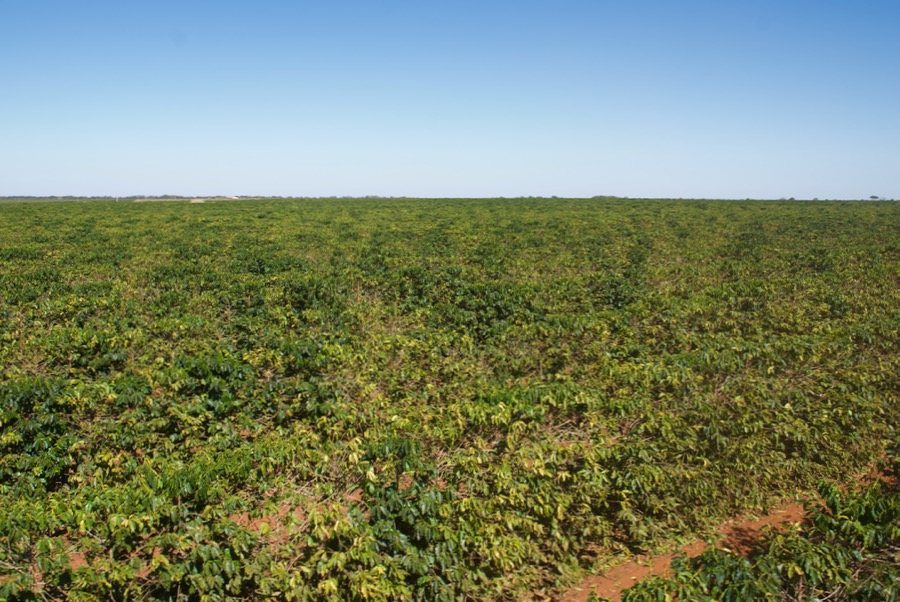
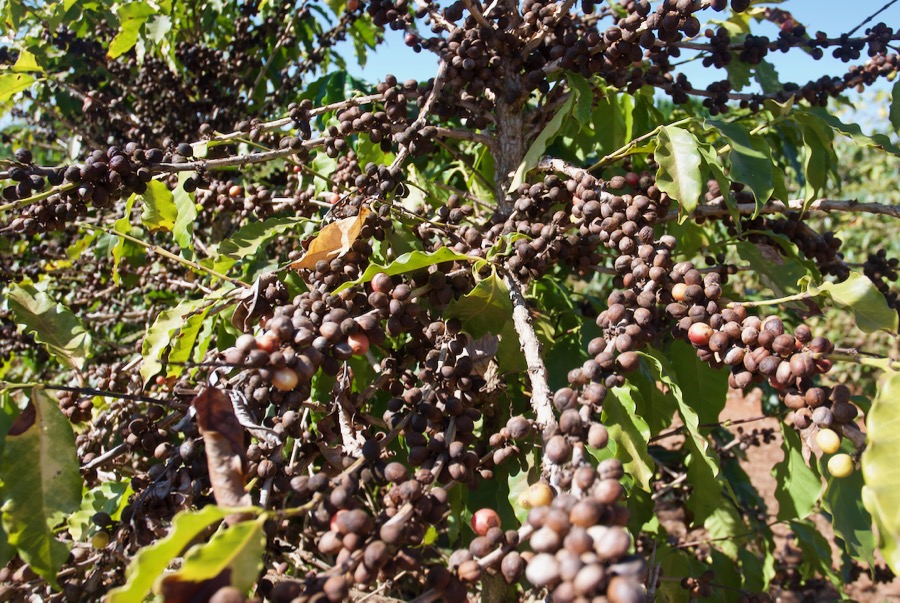
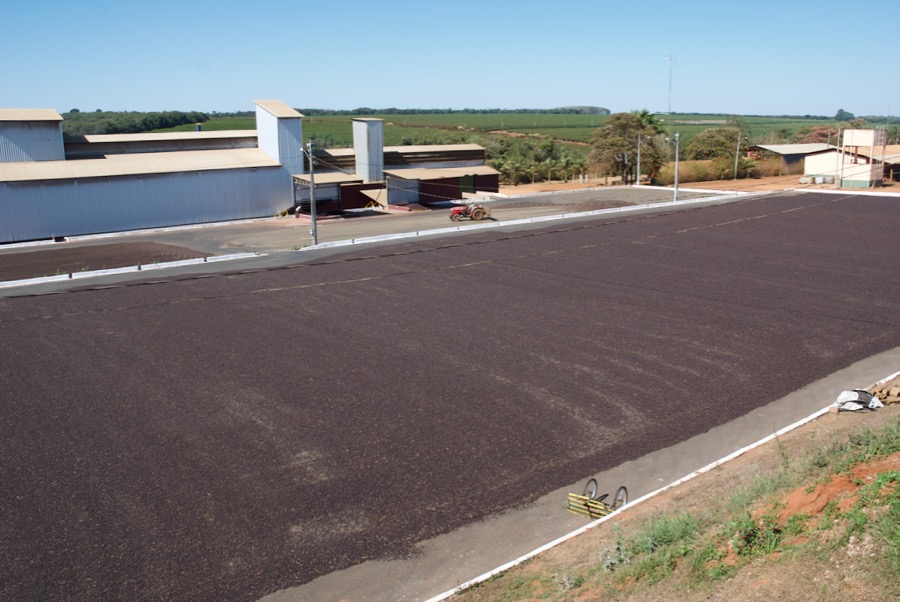
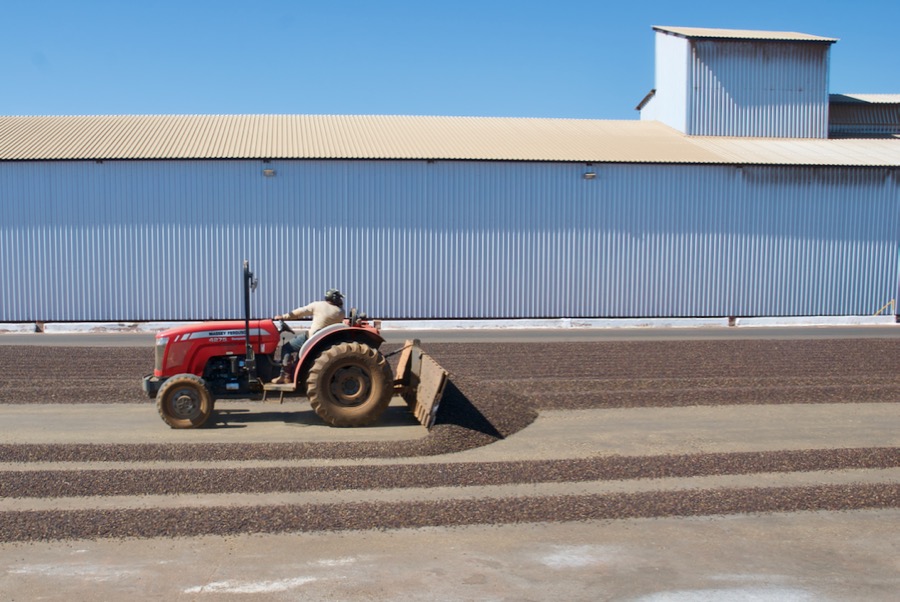
fazenda paraiso (2000 hectare farm)
only one photo of fazenda paraiso of us staring down the airstrip to sum it all up. to us the farm felt detached from the crop they grow and everything seemed to be focused on quantity.
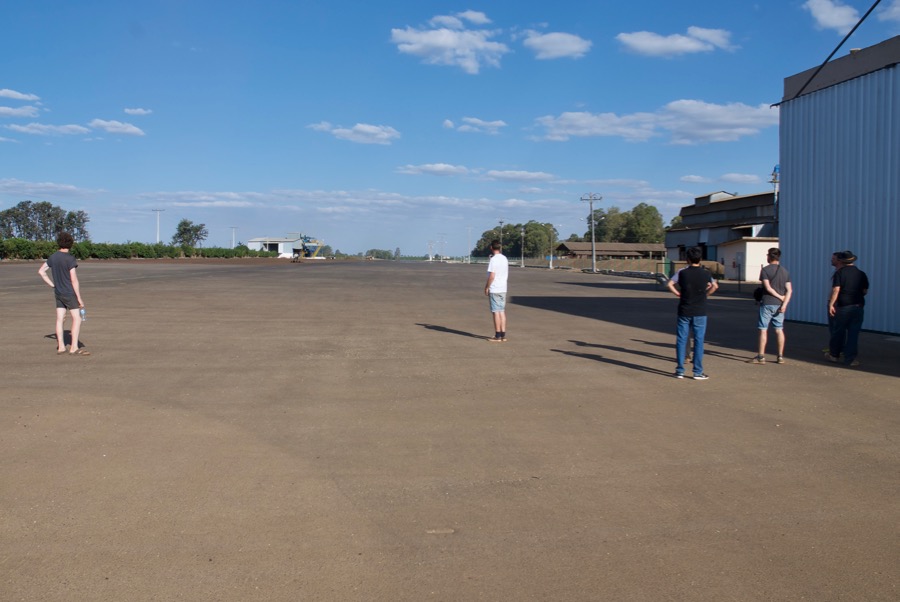
canastra coffees (progressive farmer association)
next on the itinerary was a world apart compared to the large scale farms: canastra coffees, a progressive association of smaller farmers. canastra is run by two ambitious young men: pedro and rafael. canastra aims to produce the best of brazilian coffees and are experimenting a lot with their production methods in the pursuit of quality.
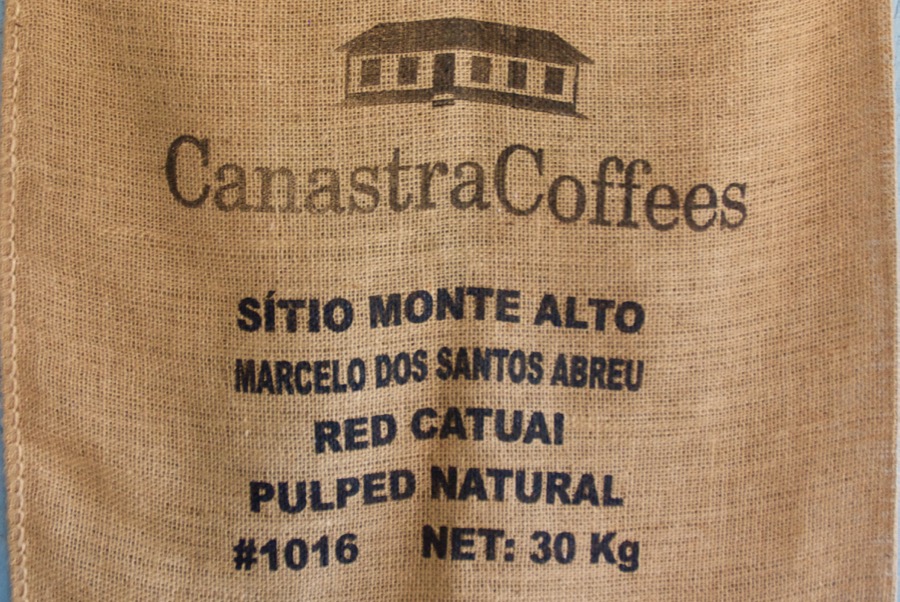
an example of their experimenting is growing coffee plants in the shade. while in almost any other origin this is the norm, it is not regularly done in brazil because you can’t use harvesting machines to do the picking. also, less sun lowers the yield of a coffee plant compared to having it in the open sun. on the upside, shade generally results in higher sugar content (sweetness) for each of the coffee cherries can use more of the nutrients the soil has to offer. also, the maturing process of the cherries is slower in the shade which in most cases results in a more complex and sweet cup.
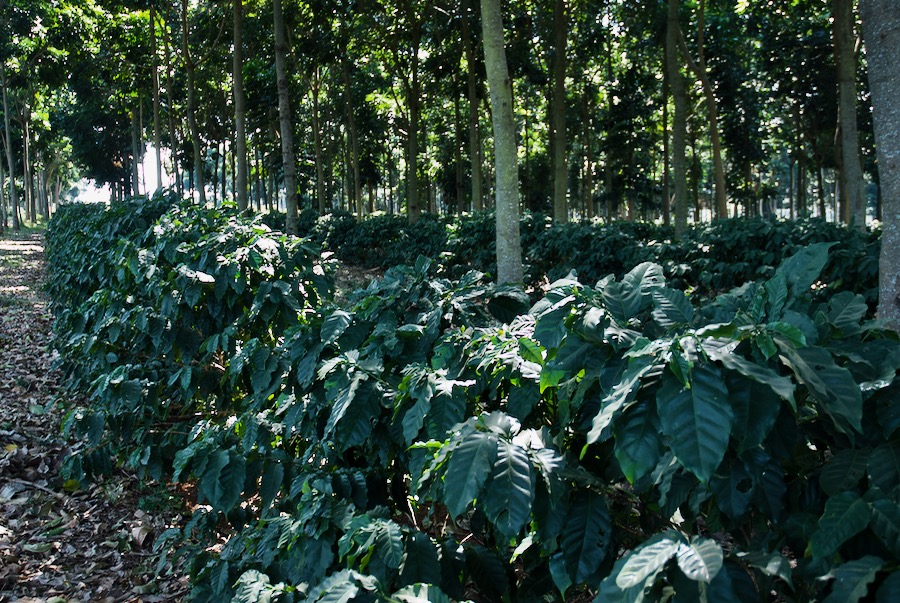
pedro also owns a farm called sitio armadillo. here they experiment a lot with for example varieties and drying methods (see below). and it pays off, this year they landed one of their lots in the 7th place of the brazilian cup of excellence competition for natural processed coffees.
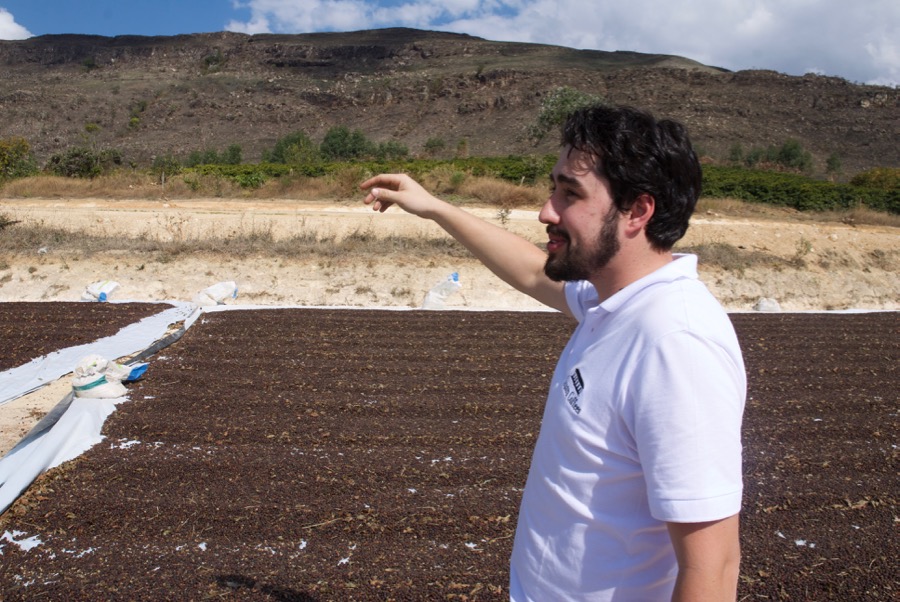
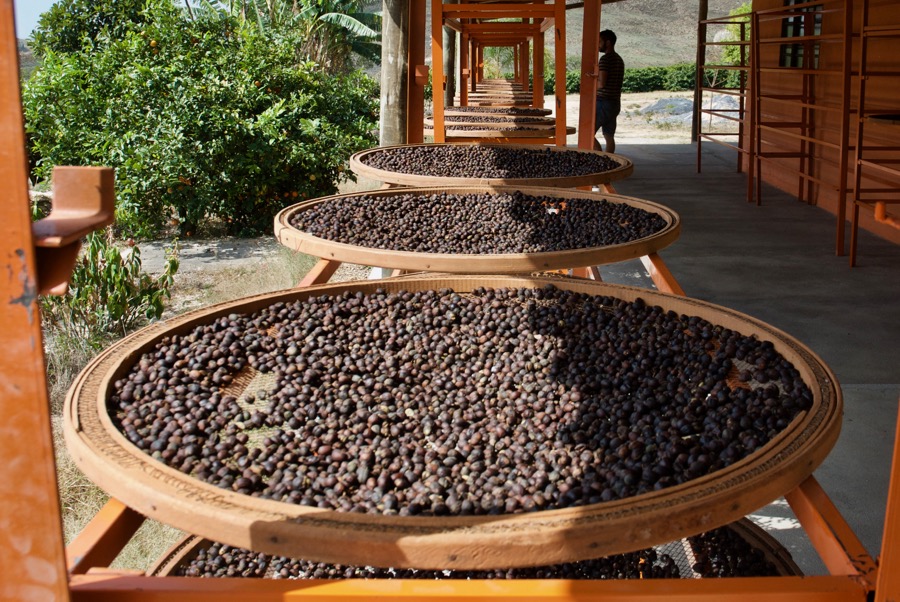
it was great a relieve to visit the farmers of canastra coffees as our coffee vibe was a bit down after visiting the big farms. the work canastra is doing is amazing. not only in their experimental ways, but also because with canastra, they connect many other local (mostly smaller scale) farmers to the specialty coffee market. with pedro’s father being a rich commodity coffee farmer they might have had a smooth start in terms of coffee knowledge, connections and funds. but it's great to see them put all their efforts and heart in developing specialty coffee within the mass production context of brazil. and with success, at this point canastra is a sustainable and profitable business running by itself.
CONCLUDING THOUGHTS
our visit to brazil kind of provided mixed feelings. on the upside we are only more strengthened in our believe of the potential of specialty coffee and the great effort our partners put into their product. on the downside it was sad to see the crazy mass production commodity farms that make up most of the coffee production landscape in brazil. at the core of it all, the main reason that most coffee is produced in this sad commodity context is of course the demand. the world wants a lot of cheap coffee. paying more for a bag or cup of coffee is something still relatively few people go for. luckily this group is growing. to use the words of rafael terra of canastra:
in the end, canastra coffees is optimistic about the specialty coffee future, because it is a global trend to search for quality, traceability and history in all products. to build and share value is more important than think about price, and a lot of people can understand the complexity and therefore will be willing to pay more for specialty coffee.
so that leaves us with a very simple task: sharing and promoting the story of coffee we value and believe in: true, tasty and produced with care and love for everything and everyone involved. special thanks to bruno’s family and the canastra guys for their hospitality, openness and help in writing this blog. and even more so because they make specialty coffee happen in brazil!